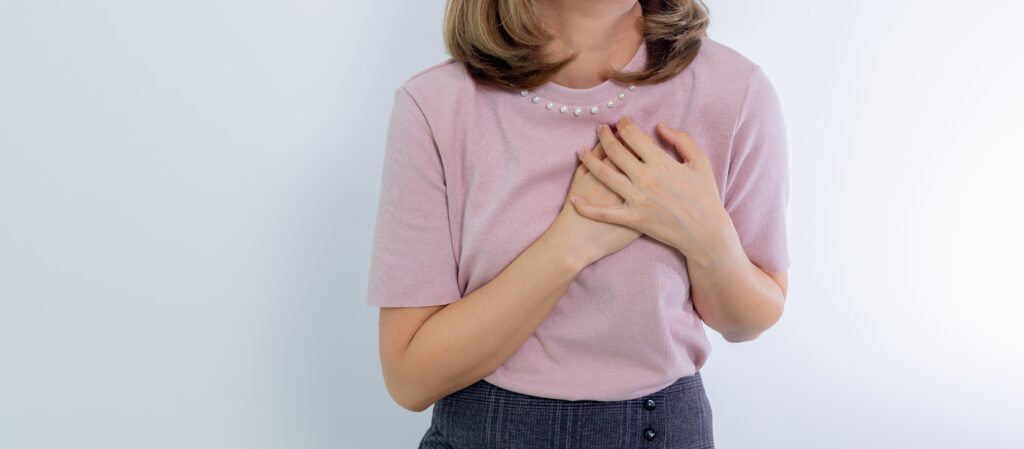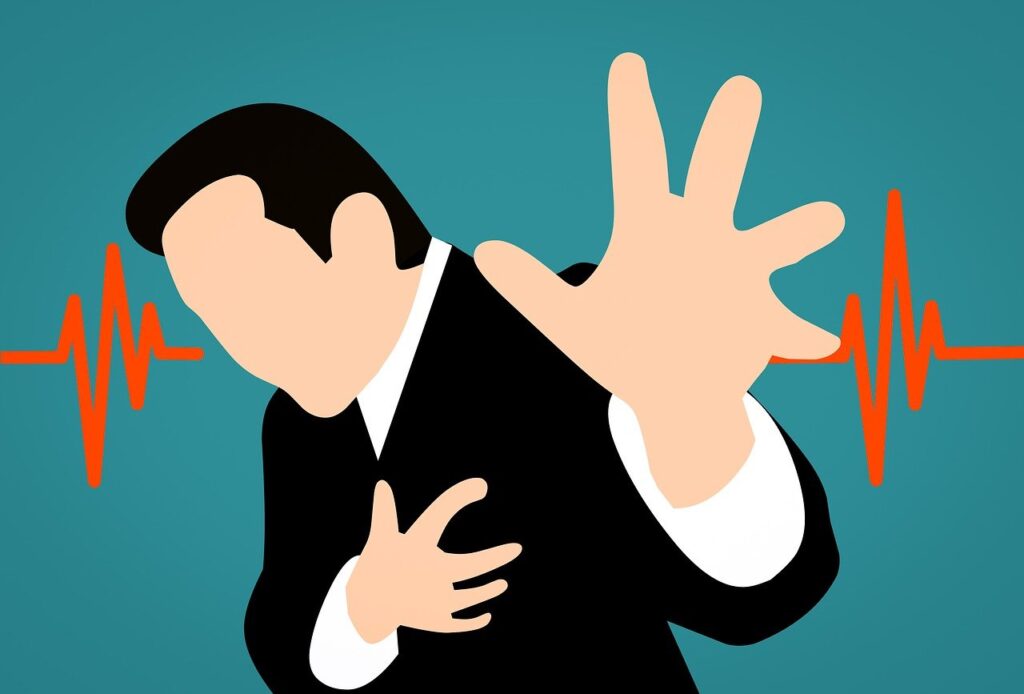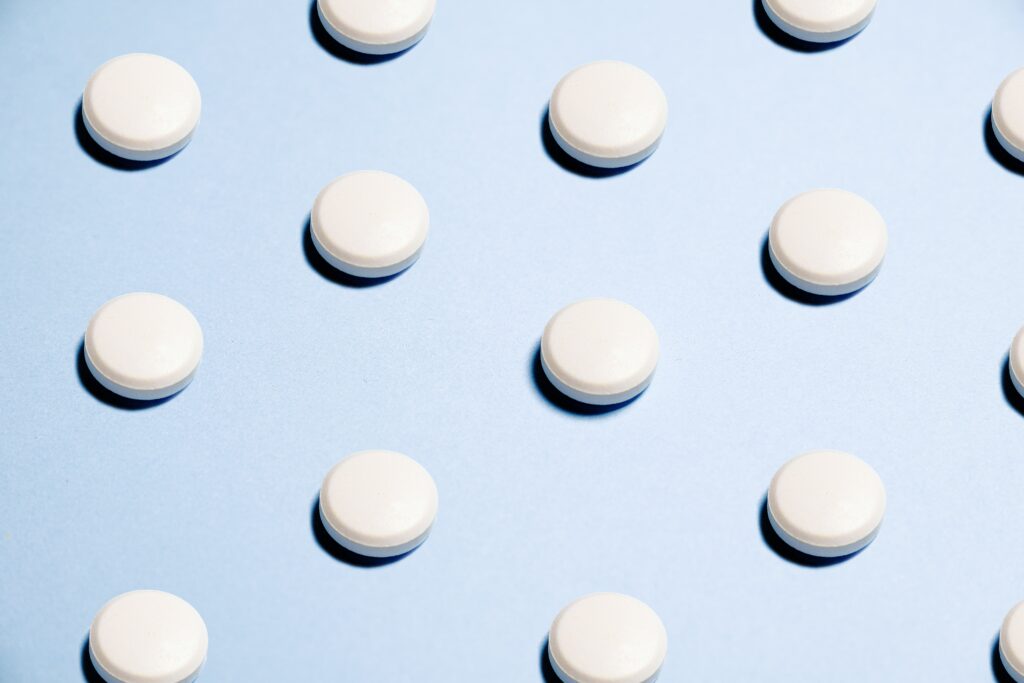Women and chest pain, where is the link between the two? Chest pain can be a scary symptom, especially for you as a woman even when it doesn’t have to be. Its presentation and potential causes can differ between men and women. Women as well as men, will experience chest pain due to various conditions, including muscle strain, minor or major cardiac issues, gastrointestinal problems, musculoskeletal conditions, or anxiety-related disorders. In this piece of content, I will explore the medications commonly used to manage chest pain in women, the different conditions that may cause chest pain in women, and the importance of tailored approaches in addressing this discomfort.
Importance of Addressing Women and Chest Pain
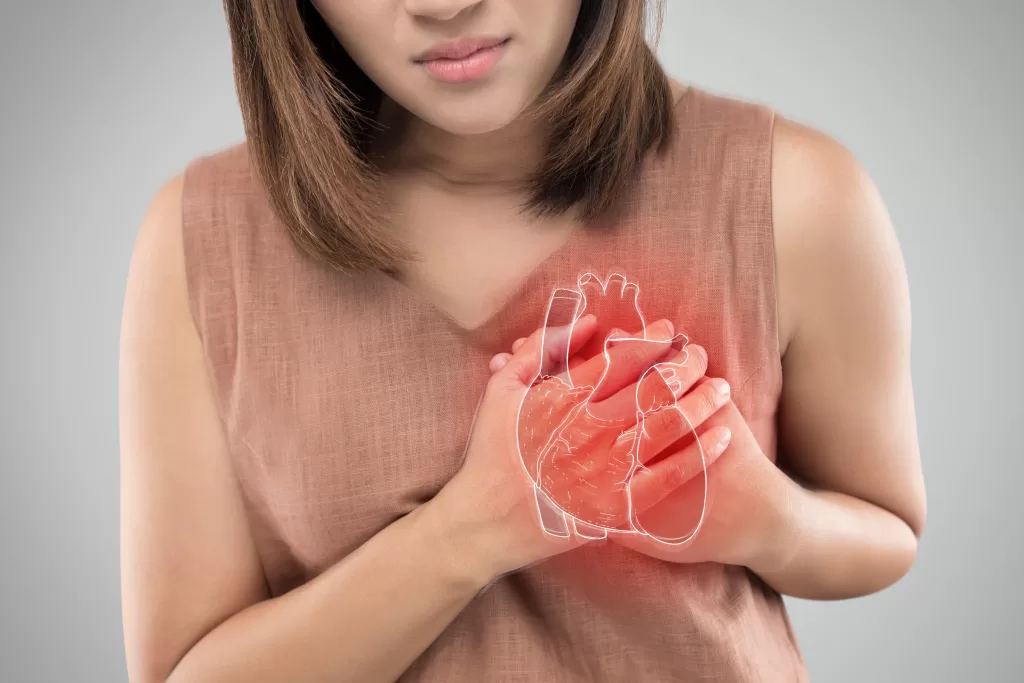
Addressing women’s chest pain is crucial for several reasons:
- Atypical Symptoms: Women often experience atypical symptoms of heart disease, such as chest discomfort that differs from the classic “crushing” chest pain typically associated with men. This discrepancy can lead to underdiagnosis or misdiagnosis of heart issues in women.
- Delayed Diagnosis: Women might delay seeking medical attention due to the perception that heart disease primarily affects men. As a result, they might ignore or attribute their symptoms to other causes, delaying diagnosis and treatment.
- Higher Mortality Risk: Women with heart disease tend to have higher mortality rates than men. Failure to recognize and address chest pain in women could contribute to adverse outcomes or delayed interventions, impacting their health outcomes.
- Different Risk Factors: Women may have different risk factors for heart disease compared to men, including hormonal factors, which further emphasize the importance of understanding and addressing chest pain in women.
Common Causes of Chest Pain in Women
- Cardiac Causes: As a woman you will experience chest pain due to conditions like angina pectoris, myocardial infarction (heart attack), or coronary artery disease. Angina is a common cause, and it is characterized by reduced blood flow to your heart.
- Gastrointestinal Causes: Gastroesophageal reflux disease (GERD), esophagitis, or peptic ulcers can cause chest pain in you as a woman. GERD, in particular, often presents itself with a burning sensation in the chest.
- Musculoskeletal Causes: Your chest pain can result from musculoskeletal issues like muscle strain, costochondritis (inflammation of rib cartilage), or fractures.
- Respiratory Causes: If you suffer from respiratory conditions like pneumonia, pleurisy, or pulmonary embolism, you will also have to endure some form of chest pain.
- Psychological Causes: Your anxiety if accompanied by panic attacks can manifest itself in you as chest pain. This is due to increased stress levels.
Medications for Chest Pain Relief for Women
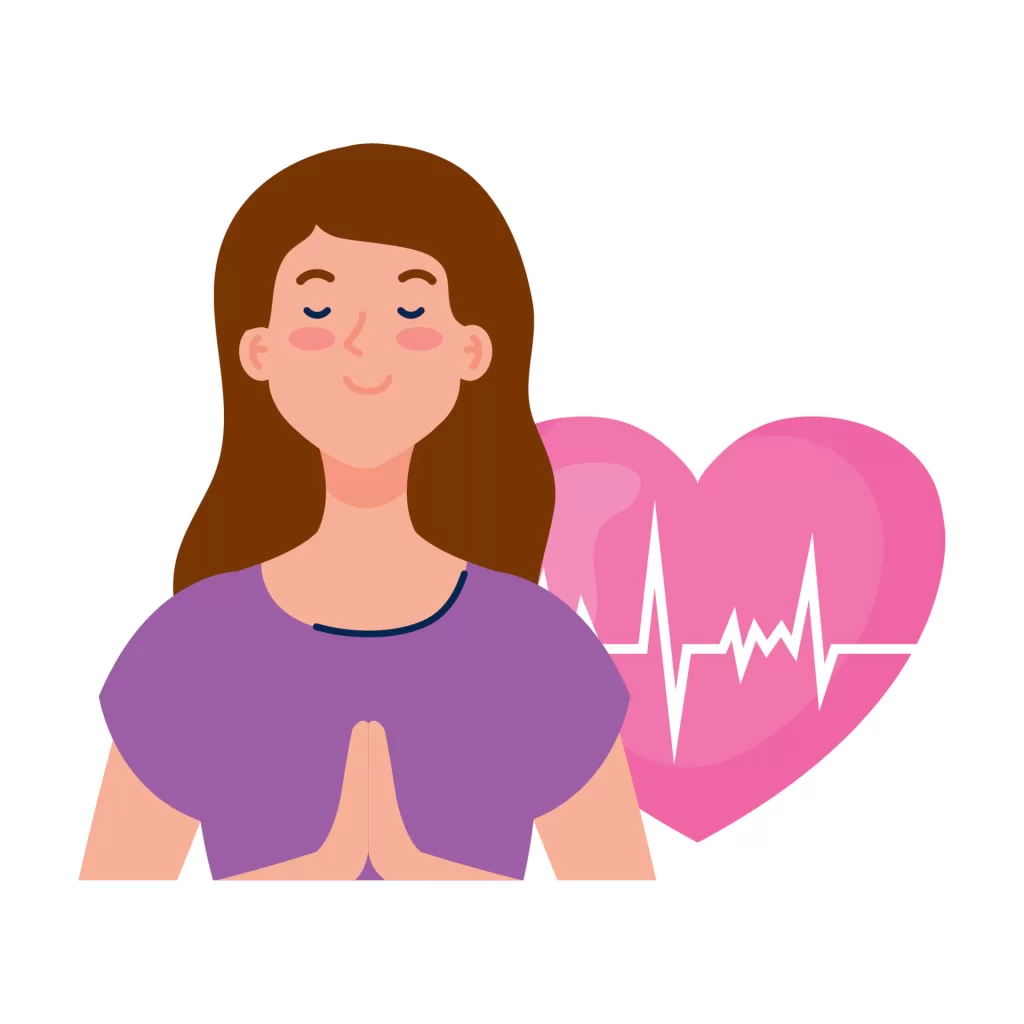
- gastrointestinal issues like GERD, antacids can provide relief by neutralizing stomach acid. You can try this amazing approved product “Pepcid Complete Acid Reducer + Antacid, Dual Action, Berry Flavor, 100 Chewable Tablets“.
- H2 Blockers (H2 Antagonists): H2 blockers, such as ranitidine or famotidine(Pepcid Complete Acid Reducer, Famotidine 10 mg, 100 Chewable Tablets), can reduce stomach acid and alleviate chest pain caused by acid reflux.
- Proton Pump Inhibitors (PPIs): PPIs like omeprazole or esomeprazole are potent acid reducers used to manage chest pain resulting from excessive stomach acid.
- Muscle Relaxants: If chest pain is due to muscle strain, muscle relaxants like cyclobenzaprine can help alleviate the discomfort.
- Pain Relievers: Over-the-counter chest pain medication like ibuprofen or acetaminophen may provide relief from chest pain caused by muscle strain or inflammation.
- Anti Anxiety Relora 250 mg, 120 Capsules, LifeTime and Anti Anxiety Relora 250 mg, 60 Capsules, LifeTime
Lower Chest Pain in Women
If you experience lower chest discomfort, this may have several causes, such as cardiac problems like angina or a heart attack, musculoskeletal strains, or gastrointestinal problems like acid reflux or heartburn. The causative reason will determine the appropriate remedy. While relaxation and light stretching can alleviate muscle soreness, over-the-counter Upper Chest Pain in Women
Women’s upper chest discomfort can be caused by a variety of ailments, including respiratory disorders, angina, heart attacks, and diseases like costochondritis, which is an inflammation of the chest wall. The fundamental cause determines the remedies. If the pain is severe, followed by perspiration, shortness of breath, or radiating to the jaw or arm, you should get medical help right away as this could be a sign of a heart emergency. Medication, lifestyle modifications, and therapies customized to the individual diagnosis are all possible forms of treatment; nonetheless, it is crucial to seek medical attention as soon as possible to ensure an accurate diagnosis and suitable management. Women who experience right chest pain may have gallbladder problems (such as gallstones or inflammation; cholecystitis), lung disorders (such as pneumonia or pulmonary embolism), or other illnesses. The underlying cause of the pain can determine the best course of action. For example, dietary modifications and medicines may be advised for gallbladder pain, while antibiotics, rest, or specialized treatments may be necessary for lung-related problems. However, since right-sided chest pain can occasionally be a sign of more serious illnesses, it’s crucial to see a doctor for a precise diagnosis and recommended course of action. Women’s muscle chest pain is frequently the result of strain from physical exercise, tension, or overexertion. The usual course of treatment is to rest, apply ice or heat packs to the injured area, stretch gently, and take over-the-counter medications such as acetaminophen or ibuprofen for pain relief. Massages or relaxation methods may occasionally be used to relieve tense muscles that are causing discomfort. But, to rule out any underlying cardiac problems or other concerns, it’s crucial to see a medical expert if the pain continues or gets worse. Middle chest pain in women can have a variety of causes, including musculoskeletal conditions like costochondritis, anxiety or panic attacks, gastrointestinal disorders like ulcers or gastritis, or cardiac conditions like angina or a heart attack. Taking over-the-counter pain relievers for musculoskeletal discomfort, practicing stress-relieving techniques for anxiety-related pain, avoiding trigger foods for gastrointestinal issues, and seeking immediate medical attention if the pain is severe, persistent, or accompanied by alarming symptoms like sweating, dizziness, or difficulty breathing, to address any potential cardiac concerns, are some of the possible remedies. A: Apart from general cross-gender causes of chest pain, There are unique causes of chest pain in you as a woman. Unique causes of chest pain in women often encompass gender-specific health issues. These may include having chest pain related to conditions like pericarditis chest pain, which is more common in women and can result from viral infections or autoimmune diseases. Hormonal changes, particularly during pregnancy or menopause, can lead to chest pain due to conditions like peripartum cardiomyopathy or stress-induced cardiomyopathy, which are more prevalent in females. To add on, disorders like fibromyalgia, which affects women disproportionately, can contribute to you having chest pain, often as a result of musculoskeletal and neuropathic pain. You need to be aware of these gender-specific factors and consider them in the assessment and management of chest pain, ensuring that appropriate medical attention is sought when needed. A: Pregnancy can lead to chest pain. There are various reasons behind this discomfort during pregnancy. Hormonal changes and the expansion of the uterus can put pressure on the diaphragm, causing a sensation of chest tightness and shortness of breath. Heartburn and acid reflux, common during pregnancy due to relaxed lower esophageal muscles, can also result in chest pain, often described as a burning sensation. In some cases, the increased blood volume and changes in cardiac output can contribute to heart palpitations and chest discomfort. While chest pain during pregnancy is typically benign, you must consult a healthcare provider if the pain is severe, persistent, or accompanied by other concerning symptoms to rule out any potentially serious conditions. A: The following conditions can be mistaken by women for chest pain. You need to get the full differences: A: A: Females should be concerned about chest pain if it is sudden, severe, or accompanied by symptoms like radiating pain, shortness of breath, dizziness, nausea, or cold sweats, as these could indicate a heart-related problem. Those with risk factors for heart disease or a history of heart-related conditions should be vigilant. New, unusual, or persistent chest pain lasting more than 15-20 minutes also warrants attention. Additionally, if the pain occurs during physical activity or stress and eases with rest, it may be indicative of angina. When in doubt or if personal concern arises, seeking medical advice is advisable, given that chest pain in women can have various causes, including serious cardiac issues. A: Here are some common angina symptoms in women: Chest pain in women can have various triggers, which necessitates a comprehensive approach to medication and treatment. The knowledge of the specific causes, tailoring treatment plans, and promoting lifestyle modifications are vital for effectively managing chest pain as a woman. Women need to consult healthcare professionals for personalized advice, treatment, and medication recommendations, ensuring the best possible outcomes and overall well-being. You can manage your health with health nutrition, check out our amazing health plan. Access insightful health articles at The Antidote Watch Video!Right Chest Pain in Women
Chest Muscle Pain in Women
Middle Chest Pain in Women
Tailored Treatment Approaches for Women
Lifestyle Modifications for Chest Pain Relief in Women

Frequently Asked Questions
Q1: What causes chest pain in a woman?
Q2: Can pregnancy cause chest pain?
Q3: What can be mistaken for chest pain in women?
Q4: What causes pain between the breasts in the center of the chest?
Q5: When should a female worry about chest pain?
Q6: Angina symptoms in women
In Summary

